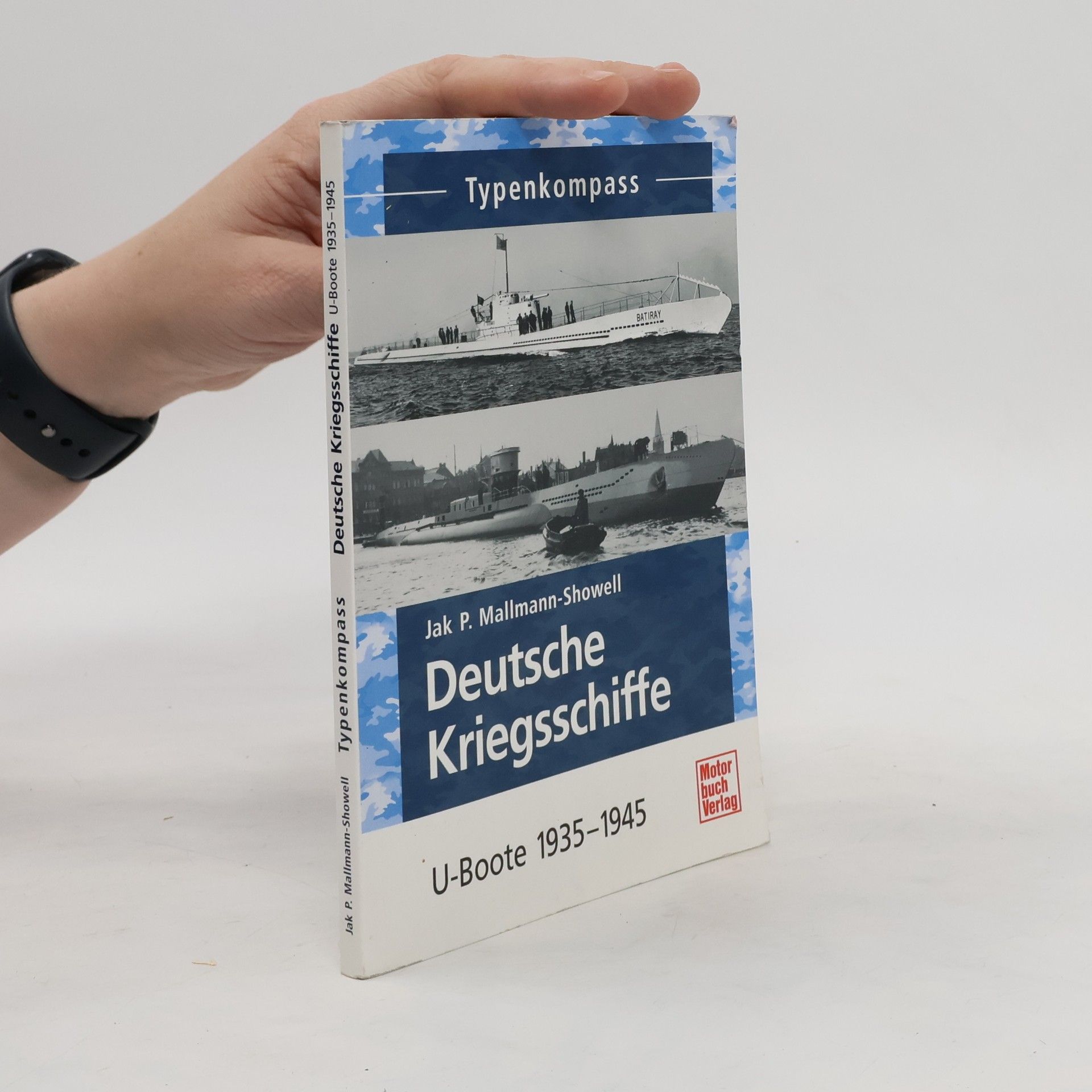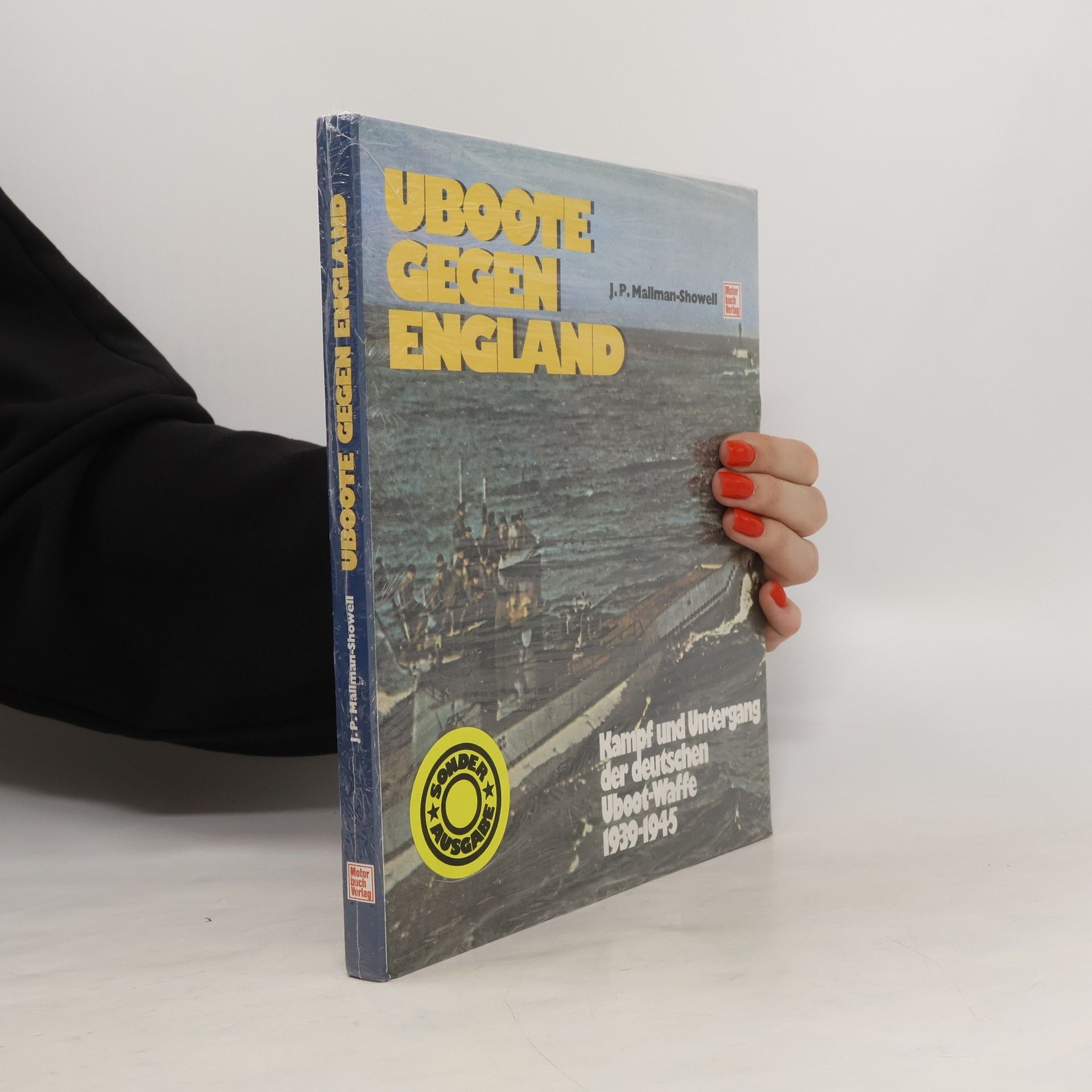The full story of the design and development of the German attack U-boats written by a renowned expert in the field.
Jak P. Mallmann Showell Books






Unique combined account of the Battle of the Atlantic from both the German and British viewpoints
The full story of the design and development of the German attack U-boats written by a renowned expert in the field. The book explains each key crew position and their respective roles.
Geschichte der deutschen U-Boot-Waffe
- 301 pages
- 11 hours of reading
Die U-Boot-Waffe wurde in zwei Weltkriegen nirgends so weitreichend entwickelt wie in Deutschland. Es gibt keinen Truppenteil, der in den Anfängen so große Erfolge verzeichnen konnte wie dieser. Der Autor beschreibt in diesem Titel nicht nur die wichtigsten deutschen Unterseeboote, ihre Organisation, Waffensysteme und Erbauer, sondern zeichnet vor dem Hintergrund der beiden Kriege ein Bild vom Dasein der U-Boot-Waffe. Schließlich rundet der Autor seine Darstellung mit Daten und Fakten ihrer modernsten Vertreter, der U-Boote der Bundesmarine ab, deren Technik zu den bestgeschützten Geheimnissen der Bundeswehr zählt.
Geheime deutsche U-Boot-Operationen
Einsätze, Stützpunkte und Bunkeranlagen 1933-1945
Während des Zweiten Weltkriegs landeten deutsche U-Boote aus operativen Gründen vielfach an bedrohlichen Gestaden. So fanden Landungen z.B. aus Spionagegründen an den Küsten von Staaten wie Irland, Spanien und den USA statt, aber auch an der nordafrikanischen Küste zur Unterstützung von Rommels Afrikakorps. Mallmann-Showell dokumentiert viele dieser schwierigen und speziellen U-Boot-Einsätze. Dabei geht er auf U-Boot-Stützpunkte und Bunkeranlagen ein, die er in Deutschland, Frankreich und Norwegen besucht hat, zeigt deren strategische Bedeutung und erklärt, wie und warum diese Anlagen gebaut wurden.
Von Kiel bis Trondheim Dieses Werk berichtet detailliert über deutsche U-Boot-Stützpunkte und ihre Bunkeranlagen. Es zeigt ihre strategische Bedeutung und erklärt, wie und warum die Anlagen gebaut wurden. Entwurf und Baumaterialien spielten eine besondere Rolle, denn mit über drei Meter dicken Betondecken haben viele dieser Bunker selbst den schwersten alliierten Bomben und sämtlichen Zerstörungsversuchen der Nachkriegszeit widerstanden. Der Verfasser hat viele ehemalige U-Boot-Stützpunkte in Frankreich, Deutschland und Norwegen besucht und noch nie veröffentlichte Berichte über sie aufgespürt. Er bezieht wichtige neue Informationen über die verbliebenen Bunker mit ein, die zum Teil heute noch Landschaft und Umgebung beherrschen oder unter strenger Abschirmung weiter genutzt werden. Ein umfassendes Verzeichnis der Orte mit genauer Beschreibung legt dar, was Besucher an den Örtlichkeiten heute noch vorfinden können.
Während des Zweiten Weltkriegs lieferte sich die deutsche Kriegsmarine einen unerbittlichen und verlustreichen Kampf mit den Alliierten im Atlantik. Sowohl die Einsätze der umherstreifenden »Wolfsrudel«, der U-Boote, als auch die der Überwasser- Kriegsschiffe gehören zweifellos zu den wichtigsten Ereignissen der Seekriegsgeschichte. Mallman-Showell widmet sich in diesem Buch sowohl den Aufgaben und der Organisation als auch der Ausbildungsfähigkeit der deutschen Flotte während der Kriegsjahre. Abgerundet mit zahlreichen Fotos, Karten und Diagrammen ist dieses Werk ein Muss für jeden zeitgeschichtlich Interessierten.

